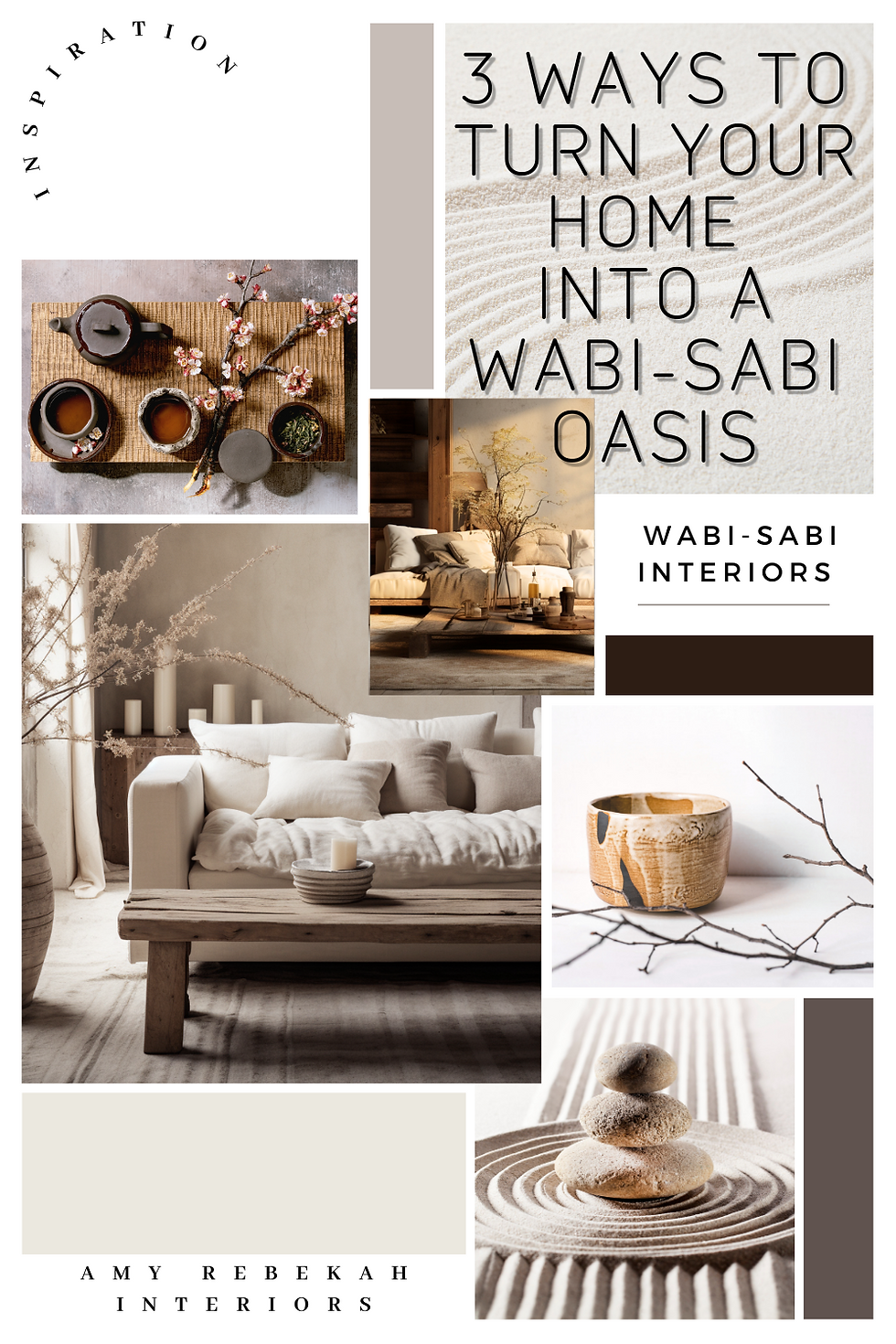You may have seen the words Wabi-Sabi recently in Interior Design and think it’s a new trend, but did you know it originated back in the 15th century in Japan?! The Wabi-Sabi aesthetic came from a Japanese tea ceremony, chanoyu, which focuses on simplicity. It represents the basic Zen principles of harmony, respect, purity and tranquility. It’s about finding beauty in imperfection. It’s about finding peace in the incomplete. It’s about finding comfort in impermanence.
My favorite part - imperfection is beautiful! This style allows you to add character to your space, and whatever you see as perfect can be. So you’re probably asking, how do I accomplish this look? Keep reading.
Wabi-Sabi’s Charm is in the Imperfection

In a culture obsessed with perfection, the Wabi-Sabi style is unique for celebrating imperfection.
Wabi-Sabi lets you appreciate the beauty found in things like asymmetry, worn and organic textures, and the natural aging process. It challenges the thought that flawlessness is the only definition of beauty.
Let’s be honest, with kids and pets and our busy lives, is perfection even achievable? While our answers might be different, here are 3 ways you can achieve a perfectly imperfect space.
The Power of Empty Space

In negotiations, they say that the person talking the most is losing. There is power in silence. This rings true for design as well. So if you’re feeling like the design trends are full of stuff (i.e. a maximalist design style) and it feels overwhelming for you - that’s ok! Rather than fill every nook and cranny with accessories or knick-knacks you’ve accumulated, you’ll be surprised if you just stop and step back. That you find there is beauty in a small void.
Design Tip: Instead of grouping together 5 vases to make a statement, try just 2 sitting next to each other for a more simple Wabi-Sabi approach.
Find Simplicity in Natural Materials

You’ve heard the phrase “Less is more”, right? It’s time to embrace this principle with Wabi-Sabi by using natural materials, like wood and stone as a way to add beauty to your space without overdoing it with fancy finishes. Natural materials bring warmth and character to your space. Whether you like a more rustic look with raw weathered woods (for tables, walls, beams, doors, etc) or you prefer a more refined look with stone and marbles (for accents, vases, flooring, tables, etc) by using these natural elements, you’re able to add an elegance to your space by focusing on the inherent beauty of raw materials.
Design Tip: Don’t be afraid to mix materials! Simple doesn’t have to mean drab. You can mix marble and travertine, or 2 wood tones, or even concrete, leather and wood. By doing this, you’re creating visual interest and adding warmth to your space.
Design with Impermanence in Mind

As humans, change is the only constant. So why should design be any different? Wabi-Sabi reminds us to appreciate the beauty in the passage of time. Rather than design around novelty pieces that will go out of style, design your home with pieces that will patina as your life and home changes.
Design Tip: Objects carry stories too, and these stories make your home richer. When you’re traveling and you see that amazing piece - get it! This piece now not only becomes a statement for your home, it carries memories and a store to share for generations.
Reflect on Wabi-Sabi as Your New Design Style
With everything around you moving at such a fast pace, Wabi-Sabi invites you to pause and reflect on your surroundings. It creates an inviting environment, full of warmth. It’s meant to age with you, creating a more meaningful home.
So rather than fill every nook and cranny, consider a Wabi-Sabi’s style for your home focused on quality over quantity. Recognize that empty space creates a sense of calmness and tranquility.
In a culture that constantly seeks the next big thing, Wabi-Sabi reminds us of the beauty found in simplicity and imperfections. Are you struggling with less is more and need help editing your space? Amy Rebekah Interiors is your Interior Design Editor. Send us an email to learn more!


Comments